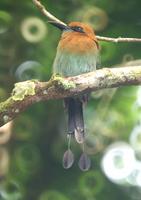|
Broad-billed Motmot. Photo by Barry Ulman. All rights reserved.

| 해상도: 327x465
파일크기: 64816 Bytes
촬영일: 2006:08:22 05:45:22
사진기: MAXXUM 7D (KONICA MINOLTA )
F number: f/8.0
Exposure: 1/40 sec
Focal Length: 5000/10
등록시간: 2008:02:02 01:56:33
|
|
|

